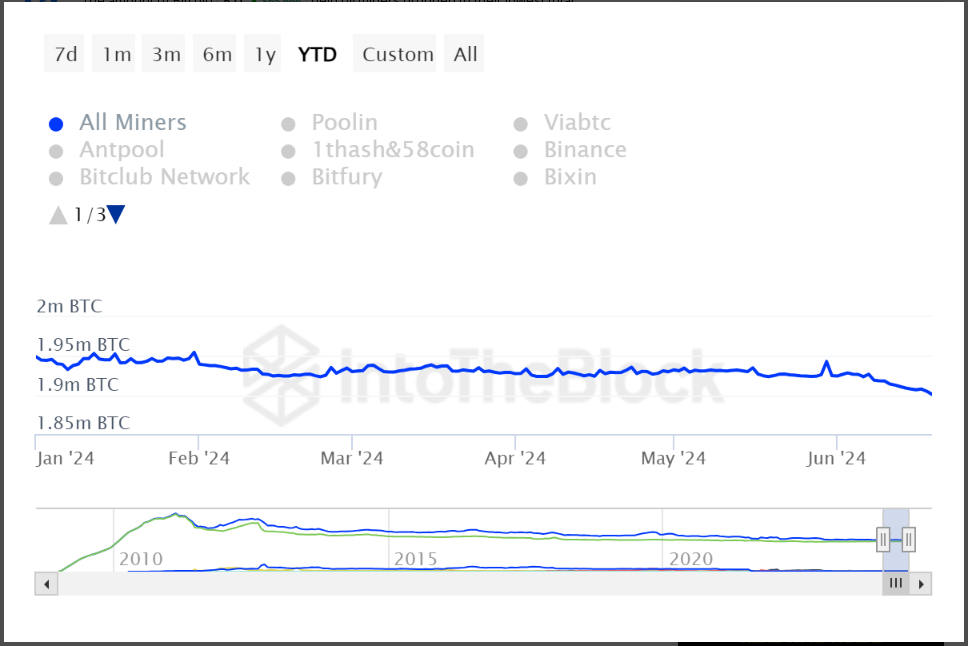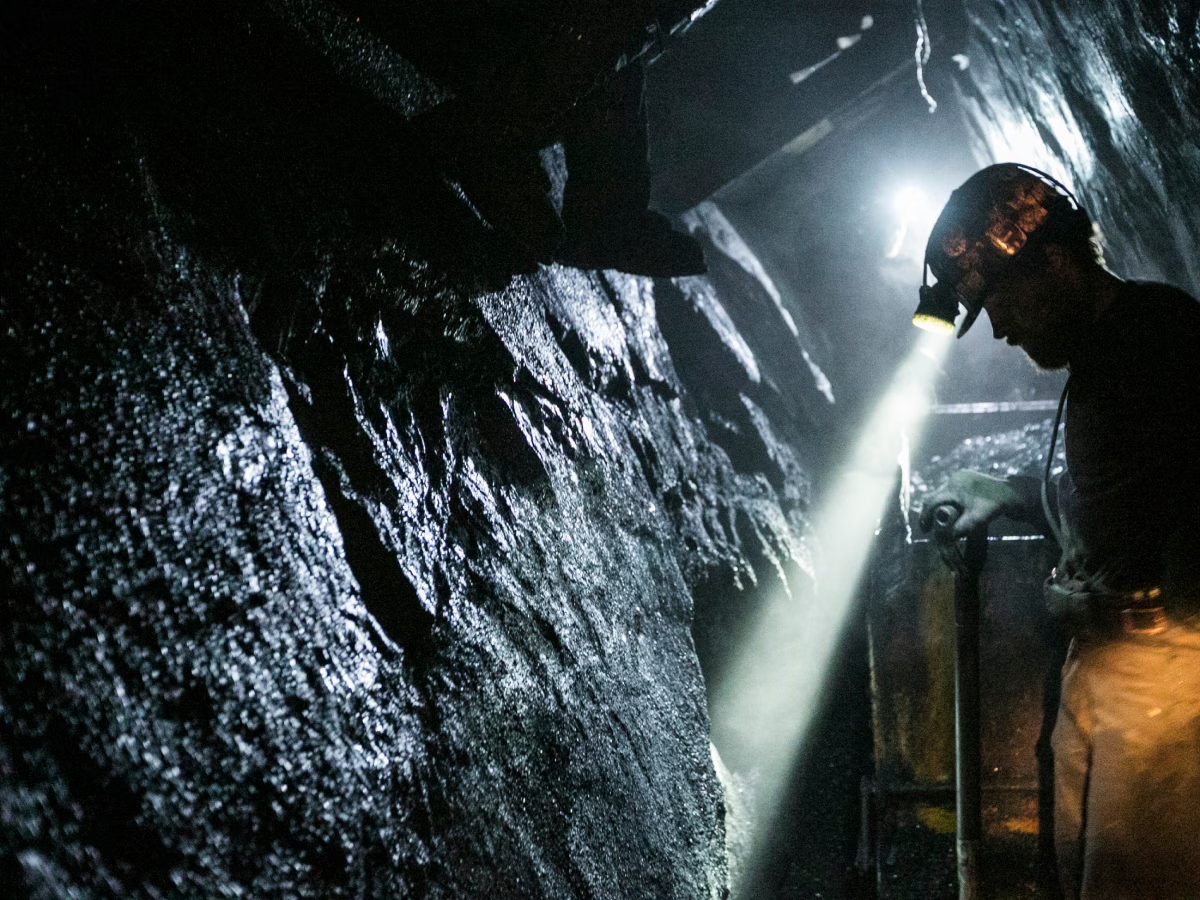
The basis of the largest cryptocurrency in the world, bitcoin miners, are undergoing notable behavioural changes. Based on statistics from IntoTheBlock, which reveals an unexpected trend: miner reserves have dropped to their lowest point in 14 years, questions over the future of Bitcoin mining have been voiced. Further investigation reveals, though, that this might be an instance of clever adaptation rather than a mass exodus.
Halving Headaches: Balancing Rewards And Risk
The recent halving of Bitcoin in April 2024 is the reason for this change. Half of the Bitcoins that miners receive in exchange for confirming transactions are distributed about every four years. The payout decreased this time, going from 6.25 BTC to 3.125 BTC. Even though it might appear like a slight drop, miner profitability is greatly impacted by this.
Margin is pressed by the halving. Now, miners must decide whether to sell Bitcoin to pay operating expenses or hang onto it in the hopes that its value will increase.

Bitcoin down in the last week. Source: CoinMarketCap
Given how erratic the market is right now, hanging onto Bitcoin is not a very attractive substitute. Given price declines, long-term risks are riskier currently, therefore miners are prioritising their immediate financial stability. In past halving cycles, miners stockpiled their Bitcoin in expectation of future price surges. This is a marked contrast to the present state of affairs.
Selling Smart: Strategic Swaps Over Hodling
There is, however, a benefit to this sell-off. The total dollar value of miners’ deposits is still quite close to its all-time high of $135 billion, despite the fact that the quantity of Bitcoins they own is declining. This implies a calculated mental adjustment.

Since February 2010, miners' Bitcoin holdings have decreased to the lowest point. Source: IntoTheBlock
“Miners seem to have learned from past trends,” says Sascha Grumbach, CEO of Green Mining DAO. “Gone are the days of overleveraging and hodling onto too much Bitcoin.”
The risks of becoming overly dependent on changes in Bitcoin prices were made clear by the bear market of 2018. Rather than placing all of their reliance in the hope of long-term price growth, miners are increasingly placing a higher priority on a diversified portfolio and short-term returns through selective sales.
This seeming restraint may be an indication that the Bitcoin mining market is developing. Miners are now approaching their operations like any other business, with a focus on sustainability and profitability, rather than just following the next big Bitcoin boom.
BTCUSD trading at $65,696 on the daily chart: TradingView.com
Adapting To Changing Landscapes
The hash rate of Bitcoin, or the total processing power of the network, may drop as an effect of this change in miner behavior. Mining becomes less profitable as a result of declining Bitcoin incentives and heightened competition, which may deter new miners from entering the market and force current ones to reduce their output.
In response to the shifting economic conditions, miners are choosing short-term stability over high-risk long-term investments. This change may indicate that the sector is maturing and moving away from chasing the next Bitcoin bubble and toward sustainable operations.
Featured image from News18, chart from TradingView


















